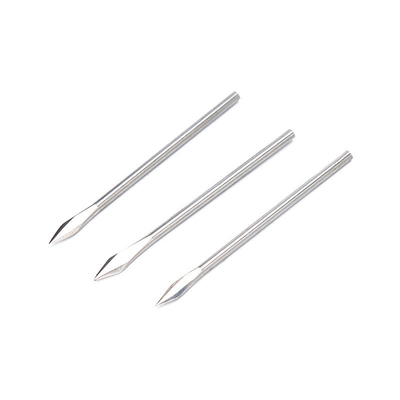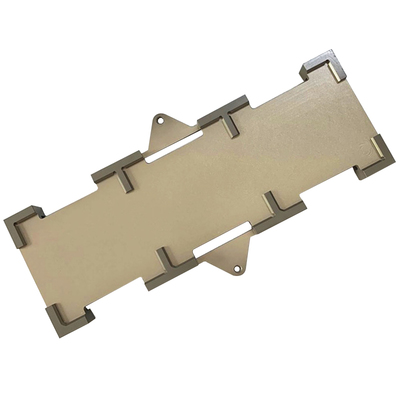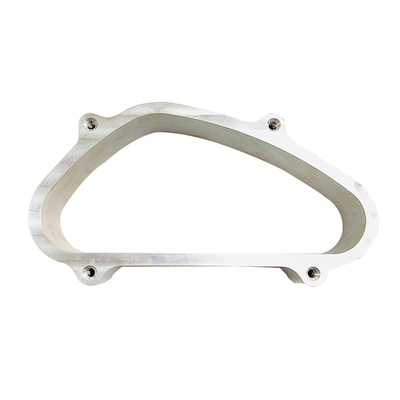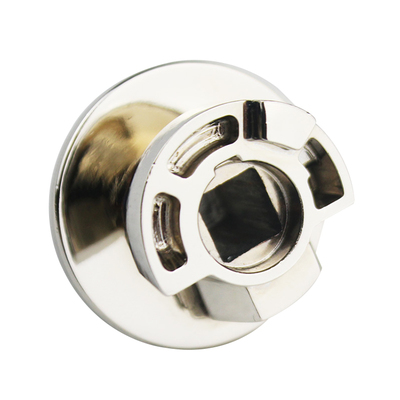The Metal Forming Method Of Casting
Besides learning about punching and forming, what other methods are there for metal forming?
Casting
The liquid metal is poured into a mold cavity suitable for the shape and size of the part, and it is cooled and solidified to obtain the production method of the blank or part, which is usually called liquid metal forming or casting.
Process flow: liquid metal→filling→solidification shrinkage→casting
Process characteristics:
- 1. It can produce parts with arbitrarily complex shapes, especially parts with complex inner cavity shapes.
- 2. Strong adaptability, unlimited alloy types, almost unlimited casting size.
- 3. There are wide sources of materials, waste products can be remelted, and equipment investment is low.
- 4. High scrap rate, low surface quality and poor working conditions.
Casting classification:
(1) Sand casting
Casting method for producing castings in sand molds. Steel, iron and most non-ferrous alloy castings can be obtained by sand casting methods.
Technical features:
- 1. It is suitable for making blanks with complex shapes, especially with complex inner cavities;
- 2. Wide adaptability and low cost;
- 3. For some materials with poor plasticity, such as cast iron, sand casting is the only forming process for manufacturing its parts or blanks.
Application: automobile engine cylinder block, cylinder head, crankshaft and other castings
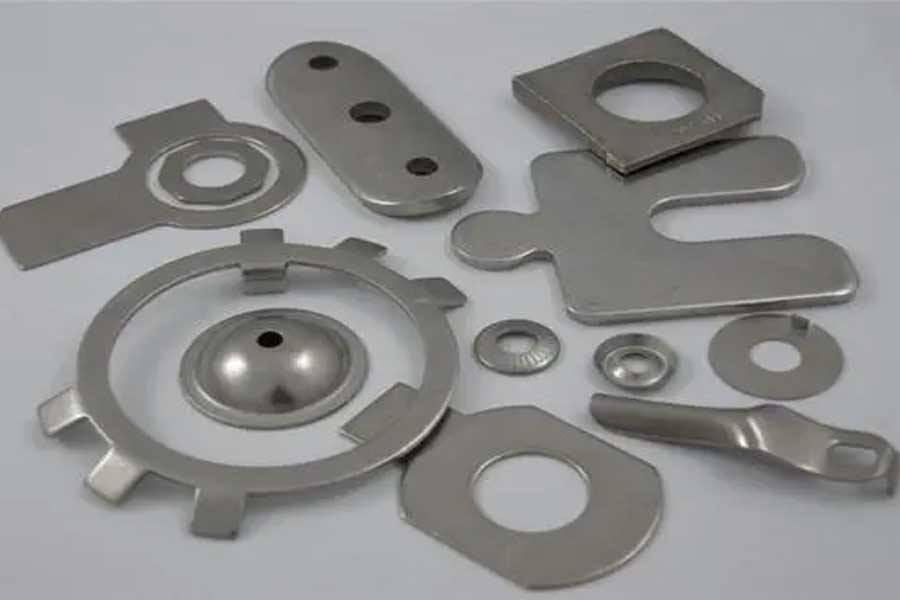
(2) Investment casting
Usually refers to making a pattern made of fusible materials, covering the surface of the pattern with several layers of refractory materials to form a shell, and then melting the pattern out of the shell to obtain a mold without a parting surface, which can be filled after high-temperature baking. Casting scheme for sand pouring. Often referred to as "lost wax casting".
advantage:
- 1. High dimensional accuracy and geometric accuracy;
- 2. High surface roughness;
- 3. It can cast complex castings, and the cast alloy is not limited.
Disadvantages:
complicated procedures and high cost
Application: Suitable for the production of small parts with complex shapes, high precision requirements, or other processing difficulties, such as turbine engine blades.
(3) Die casting
The molten metal is pressed into a precision metal mold cavity at a high speed by high pressure, and the molten metal is cooled and solidified under pressure to form a casting.
advantage:
- 1. The metal liquid is subjected to high pressure during die-casting, and the flow rate is fast
- 2. Good product quality, stable size and good interchangeability;
- 3. The production efficiency is high, and the die-casting mold is used many times;
- 4. It is suitable for mass production with good economic benefits.
shortcoming:
- 1. Castings are prone to small pores and shrinkage porosity.
- 2. Die-casting parts have low plasticity and are not suitable for working under impact load and vibration;
- 3. When high melting point alloy is die-casting, the mold life is low, which affects the expansion of die-casting production.
Application: Die castings were first used in the automobile industry and instrument industry, and later gradually expanded to various industries, such as agricultural machinery, machine tool industry, electronics industry, defense industry, computer, medical equipment, clocks, cameras, and daily hardware, etc. .
(4) Low pressure casting
It refers to the method of filling the mold with liquid metal under lower pressure (0.02~0.06MPa) and crystallizing under pressure to form castings.
Technical features:
- 1. The pressure and speed during pouring can be adjusted, so it can be applied to various casting molds (such as metal molds, sand molds, etc.), casting various alloys and castings of various sizes;
- 2. Bottom injection type filling is adopted, the filling of molten metal is stable, and there is no splashing phenomenon, which can avoid the entrapment of gas and the erosion of the wall and core, which improves the qualification rate of castings;
- 3. The casting crystallizes under pressure, the structure of the casting is dense, the outline is clear, the surface is smooth, and the mechanical properties are high, which is especially advantageous for the casting of large and thin-walled parts;
- 4. The feeder riser is omitted, and the metal utilization rate is increased to 90-98%;
- 5. Low labor intensity, good working conditions, simple equipment, easy to realize mechanization and automation.
Application:
Mainly traditional products (cylinder head, wheel hub, cylinder frame, etc.).
(5) Centrifugal casting
A casting method in which molten metal is poured into a rotating mold and filled with the mold under the action of centrifugal force to solidify and shape.
advantage:
- 1. There is almost no metal consumption in the gating system and the riser system, which improves the production rate of the process;
- 2. The core can be omitted when producing hollow castings, so the metal filling ability can be greatly improved when producing long tubular castings;
- 3. Castings have high density, few defects such as pores and slag inclusions, and high mechanical properties;
- 4. It is convenient to manufacture barrel and sleeve composite metal castings.
shortcoming:
- 1. There are certain limitations when used in the production of special-shaped castings;
- 2. The diameter of the inner hole of the casting is not accurate, the surface of the inner hole is relatively rough, the quality is poor, and the machining allowance is large;
- 3. Castings are prone to segregation of specific gravity.
application:
Centrifugal casting was first used to produce cast pipes. At home and abroad, centrifugal casting was used in metallurgy, mining, transportation, irrigation and drainage machinery, aviation, national defense, automobile and other industries to produce steel, iron and non-ferrous carbon alloy castings. Among them, the production of castings such as centrifugal cast iron pipes, internal combustion engine cylinder liners and shaft sleeves is the most common.
(6) Gravity die casting
A molding method in which liquid metal fills a metal mold under the action of gravity and cools and solidifies in the mold to obtain a casting.
advantage:
- 1. The thermal conductivity and heat capacity of the metal mold are large, the cooling rate is fast, the structure of the casting is dense, and the mechanical properties are about 15% higher than that of the sand casting.
- 2. Castings with higher dimensional accuracy and lower surface roughness values can be obtained, and the quality stability is good.
- 3. Because sand cores are not used and rarely used, the environment is improved, dust and harmful gases are reduced, and labor intensity is reduced.
shortcoming:
- 1. The metal mold itself has no air permeability, and certain measures must be taken to export the air in the cavity and the gas generated by the sand core;
- 2. The metal mold has no retreat, and the casting is prone to cracks when it solidifies;
- 3. The metal mold manufacturing cycle is longer and the cost is higher. Therefore, only in mass production, can it show good economic results.
application:
Metal mold casting is not only suitable for mass production of non-ferrous alloy castings such as aluminum alloys and magnesium alloys with complex shapes, but also suitable for the production of iron and steel metal castings and ingots.
(7) Vacuum die casting
An advanced die-casting process that eliminates or significantly reduces the pores and dissolved gases in the die-casting parts by removing the gas in the die-casting mold cavity during the die-casting process, thereby improving the mechanical properties and surface quality of the die-casting parts.
advantage:
- 1. Eliminate or reduce the pores inside the die casting, improve the mechanical properties and surface quality of the die casting, and improve the plating performance;
- 2. To reduce the back pressure of the cavity, lower specific pressure and alloys with poor casting properties can be used, and it is possible to die-cast larger castings with a small machine;
- 3. The filling conditions are improved, and thinner castings can be die-casted;
shortcoming:
- 1. The mold sealing structure is complicated, and it is difficult to manufacture and install, so the cost is high;
- 2. If the vacuum die-casting method is improperly controlled, the effect is not very significant.
Link to this article: The Metal Forming Method Of Casting
Reprint Statement: If there are no special instructions, all articles on this site are original. Please indicate the source for reprinting:https://www.cncmachiningptj.com/,thanks!
 Sheet metal, beryllium, carbon steel, magnesium, 3D printing, precision CNC machining services for heavy equipment, construction, agriculture and hydraulic industries. Suitable for plastics and rare alloys machining. It can turn parts up to 15.7 inches in diameter. Processes include swiss machining,broaching, turning, milling, boring and threading. It also provides metal polishing, painting, surface grinding and shaft straightening services. The production range is up to 50,000 pieces. Suitable for screw, coupling, bearing, pump, gearbox housing, drum dryer and rotary feed valve applications.PTJ will strategize with you to provide the most cost-effective services to help you reach your target,Welcome to Contact us ( [email protected] ) directly for your new project.
Sheet metal, beryllium, carbon steel, magnesium, 3D printing, precision CNC machining services for heavy equipment, construction, agriculture and hydraulic industries. Suitable for plastics and rare alloys machining. It can turn parts up to 15.7 inches in diameter. Processes include swiss machining,broaching, turning, milling, boring and threading. It also provides metal polishing, painting, surface grinding and shaft straightening services. The production range is up to 50,000 pieces. Suitable for screw, coupling, bearing, pump, gearbox housing, drum dryer and rotary feed valve applications.PTJ will strategize with you to provide the most cost-effective services to help you reach your target,Welcome to Contact us ( [email protected] ) directly for your new project.

- 5 Axis Machining
- Cnc Milling
- Cnc Turning
- Machining Industries
- Machining Process
- Surface Treatment
- Metal Machining
- Plastic Machining
- Powder Metallurgy Mold
- Die Casting
- Parts Gallery
- Auto Metal Parts
- Machinery Parts
- LED Heatsink
- Building Parts
- Mobile Parts
- Medical Parts
- Electronic Parts
- Tailored Machining
- Bicycle Parts
- Aluminum Machining
- Titanium Machining
- Stainless Steel Machining
- Copper Machining
- Brass Machining
- Super Alloy Machining
- Peek Machining
- UHMW Machining
- Unilate Machining
- PA6 Machining
- PPS Machining
- Teflon Machining
- Inconel Machining
- Tool Steel Machining
- More Material

